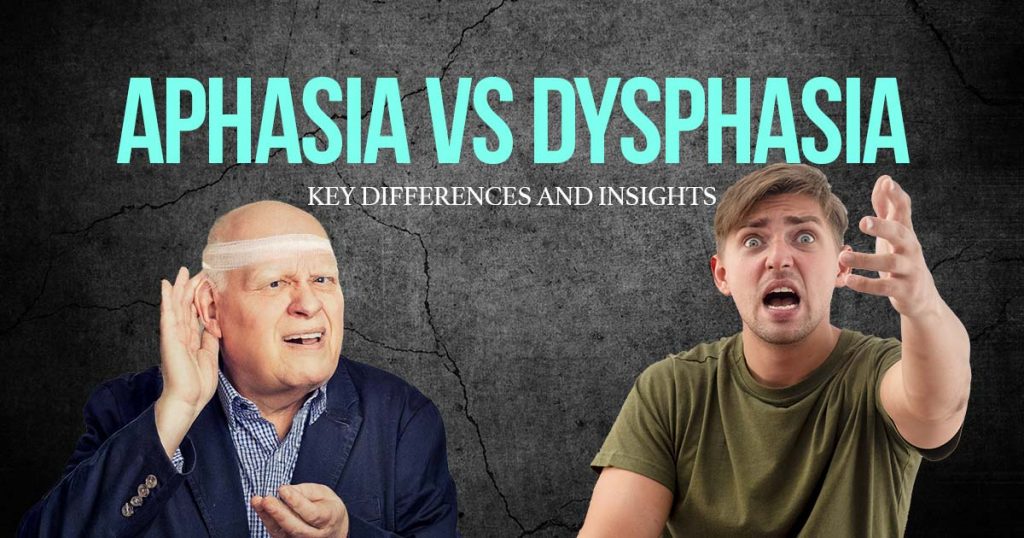Ever tried to say something, but the right word just wouldn’t come out? Now imagine that happening all the time—not being able to find words or even understand them. For many people, this is reality. About 2 million Americans live with some form of aphasia, and many more experience language challenges like dysphasia. While these terms seem similar, they address different levels of communication problems.
What Are Aphasia and Dysphasia?
First, the basics. Aphasia and dysphasia are both conditions that mess with your ability to use language. They happen when part of the brain responsible for communication gets damaged or stops functioning properly. But here’s the difference in a nutshell:
- Aphasia is more severe, often causing major disruptions in speaking, understanding, reading, and writing.
- Dysphasia, on the other hand, is milder and can include struggles like forming sentences or remembering the right words.
Think of it this way: aphasia is like completely losing the Wi-Fi connection, while dysphasia is when the signal is weak but still working. That’s how you can picture aphasic vs dysphasic individuals.
What Causes These Language Problems?
Aphasia
Aphasia usually happens because of sudden damage to the brain. The most common culprits are:
- Strokes (which account for the majority of cases).
- Head injuries from accidents.
- Brain tumors that press on language centers.
- Neurological diseases like Alzheimer’s.
Dysphasia
While dysphasia can also result from strokes or injuries, it can stem from other causes too, like developmental issues in childhood or conditions like epilepsy or multiple sclerosis. Essentially, dysphasia is a broader term—it covers more types of language difficulties, not just those linked to severe brain damage. That’s one way to look at the difference between aphasia and dysphasia.
How Do Aphasia and Dysphasia Show Up?
Signs of Aphasia
If someone has aphasia, they might:
- Speak in incomplete sentences or leave out small connecting words (e.g., saying “Go store” instead of “I’m going to the store”).
- Use the wrong words or sounds—for example, calling a “pen” a “table.”
- Struggle to follow conversations or understand written text.
- Mix up sounds when trying to say a word, like “plig” instead of “pig.”
Signs of Dysphasia
With dysphasia, you might notice:
- Trouble finding specific words, like when you know what you want to say but the word won’t come out.
- Sentences that feel scrambled or grammatically off.
- Pauses during conversations as they search for the right phrase.
- Mixing up or mispronouncing words occasionally but still able to understand others.
Basically, you can think of dysphasia as a sliding scale of communication problems, while aphasia sits at the farthest end of “difficult.”
How Are These Conditions Treated?
Good news: There’s help! Both conditions can improve with therapy, though patience and consistency are key.
For Aphasia
Speech Therapy
Specialists use targeted exercises to help rebuild language skills. For more severe cases, they might recommend communication tools like picture boards or apps that convert text to speech.
Music Therapy
Some therapists use singing to help people string words together because music activates different parts of the brain. Who knew karaoke could be practical?
Group Therapy
Practicing conversation with others facing similar challenges can make a big difference.
For Dysphasia
Since dysphasia isn’t usually as intense as aphasia, the therapy is more about fine-tuning skills:
Word Practice
Activities might focus on retrieving and using specific words or phrases.
Cognitive Drills
Memory games or exercises that boost focus can make communication smoother.
Daily Practice
Using scenarios from real life, like ordering at a coffee shop, to build confidence in speaking. A strong support system from family and friends plays a big role too. Simple things like speaking slower, repeating sentences, and using visual aids (like pointing at objects while talking) can help a lot.
Why Understanding These Conditions Matters
Knowing what dysphasia is and how it compares to aphasia isn’t just about terminology. It’s about understanding the struggles people face when communication doesn’t come easily. Imagine not being able to share a funny story, tell someone you love them, or simply ask for help. What seems small to others is often a big hurdle for people with language disorders.
Personally, I think learning about conditions like aphasia and dysphasia helps put communication into perspective. We don’t often think about how effortless speaking and understanding feel—until something stops working. If someone you know is dealing with these challenges, my suggestion is simple: be patient, listen carefully, and encourage them to seek professional help from a speech therapist. Small, everyday efforts can make a huge difference.
